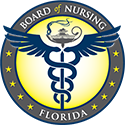Case 1: Volume 2, Case #16: The woman who liked late-night TV
The patient is a 70-year-old female with chief compliant of “being sad.” The patient is exhibiting signs and symptoms of depression due to increased loneliness. She has a home aide to assist her for her ADL’s as well as her son. She is hard of hearing and has extensive medical issues such as HTN, hypothyroidism, CAD, anemia, allergies, and obesity. Patient has never been on psychotropic medications. She has a family history of depression. Her condition became worse when she was unable to sleep perhaps due to restless leg syndrome (RLS). She has been suffering from daily crying spells.
- Do you feel sleepy or do you have occasional sleep attacks during the day? Describe your usual night sleep. (Hours of sleep, frequency of waking up, quality, etc.). Sleep deprivation can lead to depression or worsening depression. Chronic sleep deprivation can lead to depression potentially attributing to neurochemical changes in the brain (Al-Abri, 2015).
- Have any of your family members had a history of being depressed? Any mental health issues? History of suicide? Do you have any thoughts of killing yourself? Genetic factors play a huge role in the development of major depressive disorder (MDD) (Lohoff, 2010).
- Have you ever suffered from depression, anxiety, or any other mental health issues in the past? Patient’s mother suffered from MDD. Patient reports loneliness. Spouse died. History of traumatic events or history of mother having MDD can cause depression especially now that the patient is lonely.
The people that would be most closely involved with this patient would be her son and her home aide. Asking them specific questions on how the patient is doing every day. How she performs her ADL’s? What is she describing to them in terms of depression? How is she describing her RLS while she is sleeping? Do they observe her snoring when she sleeps? When does she take “naps?”
An exam to perform would be an actigraphy which is a device that records and measures human rest/activity cycles. It is a small unit that is worn for a week or two and measures gross motor activity, used to assess sleep-wake cycles or circadian rhythms. It is useful for assessing insomnia (Martin & Hakim, 2011).
Another exam to perform would be a polysomnography, also called a sleep study test. It records your brain waves, oxygen in the blood, heart rate, and breathing, as well as eye and leg movements while you sleep. The patient has depression with associated insomnia which a sleepy study can detect a pattern and help treat the insomnia (Hein et al., 2017).
Three Differential Diagnosis:
- Major Depressive Disorder (MDD) – a mental health condition which consists of depressed mood that persists for at least 2 weeks duration or longer. Signs and symptoms include poor appetite, insomnia, crying spells, sadness, loss of interest in activities, impairment of daily life, and a combination of biological, psychological, and social sources of distress. MDD is most likely the diagnosis for this patient.
- Insomnia – the patient could be having insomnia due to her RLS and the sleeping problem may be the underlying factor towards depression. However, in most cases the patient begins to become depressed and the depression is ultimately what leads to insomnia (Lohoff, 2010).
- Persistent depressive disorder – it is unknown when the patient’s depression originated, but the patient must be clinically depressed for over 2 years without remission.
Pharmacological methods:
I would begin treatment with an SSRI such as Celexa 10 mg daily PO and Sonata at 5 mg QHS PO for insomnia. Celexa is a selective serotonin reuptake inhibitor and is classified as an antidepressant. It works by boosting neurotransmitter serotonin, blocks serotonin reuptake pumps, and desensitizes serotonin receptors. (Stahl, 2008). Onset of therapeutic actions typically take up 2-4 weeks and may need to be titrated. Doses of over 20mg/day for elderly patients is not advisable and can cause abnormal changes in electrical activity of the heart in doses over 40 mg/day (Stahl, 2008). Beginning the patient on Sonata which is a non-benzodiazepine hypnotic that binds B selectively to a subtype of the benzodiazepine receptor and May enhance GABA inhibitory actions that provide sedative hypnotic effects more selectively. Inhibitory actions in sleep centers may provide sedative hypnotic effects (Stahl, 2008). Generally, takes about an hour to kick in, and improves quality of sleep. If insomnia does not improve after 7-10 days, the patient needs to be evaluated independently for her RLS and or obstructive sleep apnea. Sonata has a less effect on respiratory depression which would be beneficial for this patient if she does indeed have sleep apnea. Her RLS needs to be evaluated by medical physician and can help her sleep and reduce depression.
Lessons Learned:
Geriatric depression can be complicated given all the psychosocial issues that can be involved, as well as comorbidities such as in this case. Side effects become a burden with the elderly population and must be monitored throughout treatment. In this case study, a medical doctor as well as a psychiatrist is needed and possibly different interdisciplinary members. The patient is involved in home health as well which would need to be revisited with the addition of psychotropic medications.
References
Al-Abri M. A. (2015). Sleep Deprivation and Depression: A bi-directional association. Sultan Qaboos University medical journal, 15(1), e4–e6.
Hein, M., Lanquart, J. P., Loas, G., Hubain, P., & Linkowski, P. (2017). Similar polysomnographic pattern in primary insomnia and major depression with objective insomnia: a sign of common pathophysiology?. BMC psychiatry, 17(1), 273. https://doi.org/10.1186/s12888-017-1438-4
Lohoff F. W. (2010). Overview of the genetics of major depressive disorder. Current psychiatry reports, 12(6), 539–546. https://doi.org/10.1007/s11920-010-0150-6
Martin, J. L., & Hakim, A. D. (2011). Wrist actigraphy. Chest, 139(6), 1514–1527. https://doi.org/10.1378/chest.10-1872
Stahl, S. M. (2008). Essential Psychopharmacology Online. Retrieved from: https://stahlonline-cambridge-org.ezp.waldenulibrary.org/prescribers_drug.jsf?page=9781316618134c24.html.therapeutics&name=Citalopram&title=Therapeutics


